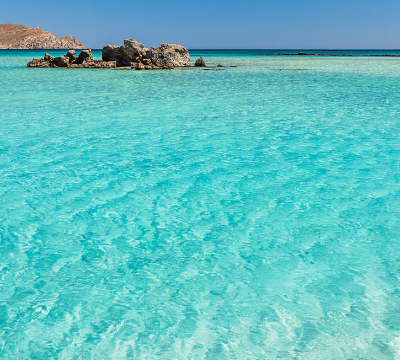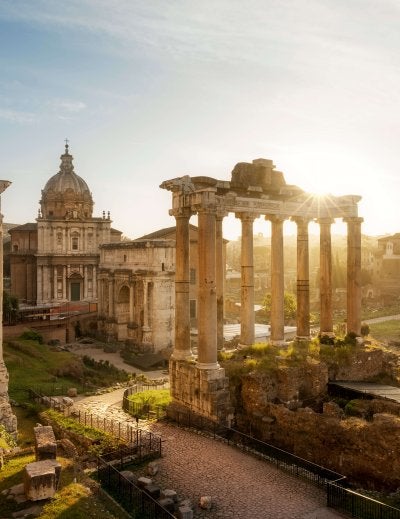
Visiting the Uffizi Gallery: Florence’s Masterpiece of Renaissance Art
The Uffizi Gallery is one of the most important art museums in the world and a key attraction in Florence. Located beside the River Arno, this gallery holds an outstanding collection of Renaissance masterpieces, many of which were once part of the Medici family’s private collection. With works by Botticelli, Michelangelo, Leonardo da Vinci, and Caravaggio, it is an essential visit for anyone interested in Italian art and culture.
A Brief History
The building now home to the Uffizi Gallery was originally commissioned in 1560 by Cosimo I de’ Medici to serve as administrative offices, or “uffizi”, for the Florentine government. Giorgio Vasari, a painter and architect favoured by Cosimo, designed the U-shaped structure. After Vasari’s death, construction was continued by Alfonso Parigi and Bernardo Buontalenti.
In 1581, Cosimo’s son Francesco I de’ Medici transformed the top floor into a private gallery for the family’s art collection. The octagonal Tribuna room, completed in 1584, became the heart of this early museum. Over the following centuries, the Medici collection continued to grow.
When the Medici dynasty ended in the 18th century, Anna Maria Luisa de’ Medici signed the Family Pact, ensuring the artworks would remain in Florence and become a public treasure. The gallery opened to visitors by appointment and became a public museum in 1769 under Grand Duke Peter Leopold.
Today, the Uffizi is one of the most visited museums in Italy, welcoming over two million people each year.
Highlights of the Collection
The Uffizi Gallery is known for its extensive collection of Italian Renaissance paintings and classical sculptures. Here are some of the must-see works:
- Botticelli’s The Birth of Venus and Primavera: Two of the most iconic paintings of the Italian Renaissance.
- Leonardo da Vinci’s Annunciation and Adoration of the Magi: Early works that showcase his innovative approach to composition and detail.
- Michelangelo’s Doni Tondo: His only completed panel painting.
- Caravaggio’s Medusa: Painted on a ceremonial shield, this striking work is a fine example of his dramatic style.
- Titian’s Venus of Urbino: A sensuous portrait with allegorical meaning.
- Raphael’s Madonna of the Goldfinch and Portrait of Pope Leo X.
- Giotto’s Ognissanti Madonna: A significant step in the evolution of Italian painting.
- Ancient sculptures: Including the Venus de’ Medici and The Wrestlers, which line the gallery’s corridors.
What to Expect When Visiting
Layout
The gallery occupies the first and second floors of the historic building, with the top floor housing the bulk of the Renaissance masterpieces. Many visitors start on the upper level and make their way down.
Opening Hours
- Tuesday to Sunday: 8:15 AM to 6:30 PM (last admission 5:30 PM).
- Closed on Mondays, 1 January and 25 December.
- Some Tuesdays feature extended evening hours. Check the museum’s website for updated times.
Tickets
- Standard ticket: €25
- Reduced (EU citizens aged 18–25): €2
- Children under 18: free
- Booking fee (online): €4
Advance booking is highly recommended, particularly during peak season. Entry is timed and limited to 900 visitors at a time.
On the first Sunday of each month, admission is free, but expect large crowds and long waits. Advance reservations are not available on these days.
How to Skip the Queue
- Book tickets online in advance
- Use the dedicated entrance at Gate 1 if you have a reservation
- Collect pre-booked tickets from Gate 3
- Avoid ticket touts and unofficial sellers
How to Get There
- On foot: 3 minutes from Piazza della Signoria, 10 minutes from the Duomo
- Bus: Routes C1, C3, 23, 12
- Train: 10-minute walk from Santa Maria Novella station
- Taxi: Ask for “Piazzale degli Uffizi”
Tips for Your Visit
- Arrive early in the morning or late afternoon to avoid the biggest crowds
- Consider starting from the second floor to see the main works before the museum gets busy
- Allow at least 3 to 4 hours to explore the gallery thoroughly
- Use an audio guide or join a guided tour for deeper insight into the artwork
- Photography without flash is generally allowed, but check signage
- Large bags and umbrellas must be checked in at the cloakroom
Special Features
Vasari Corridor
This elevated walkway was built in 1565 to connect the Uffizi with the Medici residence at the Pitti Palace. It runs above the Ponte Vecchio and includes windows overlooking the street. Access is only available through special guided tours.
Rooftop Café
Located on the second floor, the café offers excellent views of Palazzo Vecchio and the Florence skyline. It’s a pleasant spot for a short break during your visit.
Nearby Attractions
The Uffizi is centrally located, making it easy to combine with other top sights. Nearby points of interest include:
- Palazzo Vecchio
- Ponte Vecchio
- Florence Cathedral (Duomo)
- Accademia Gallery
- Basilica of Santa Croce
- Palazzo Pitti and Boboli Gardens
Frequently Asked Questions
How long does a visit take?
Plan for at least three hours, or longer if you’re interested in seeing all the major works.
Is the Uffizi accessible?
Yes. Lifts and wheelchair access are available. Visitors with mobility needs should ask staff for assistance at the entrance.
Is the gallery suitable for children?
Yes, although younger children may find the museum less engaging. There are changing facilities and a dedicated baby care area.
Can I take photos?
Photography without flash is usually permitted, but professional equipment and selfie sticks are not allowed. Always check the room signage.
Are there guided tours?
Yes. Audio guides are available in several languages. Guided tours are offered in small groups or as private experiences and may include access to special areas such as the Vasari Corridor.




Leave a Reply
You must be logged in to post a comment.